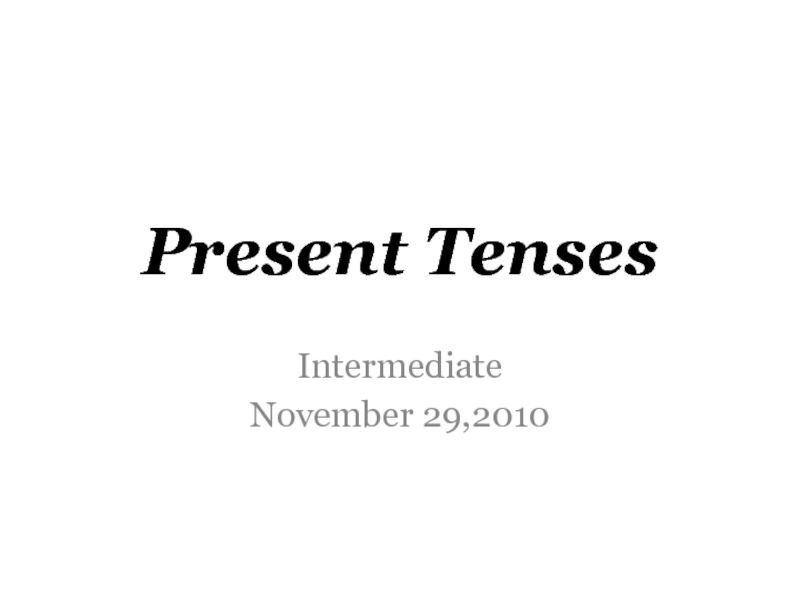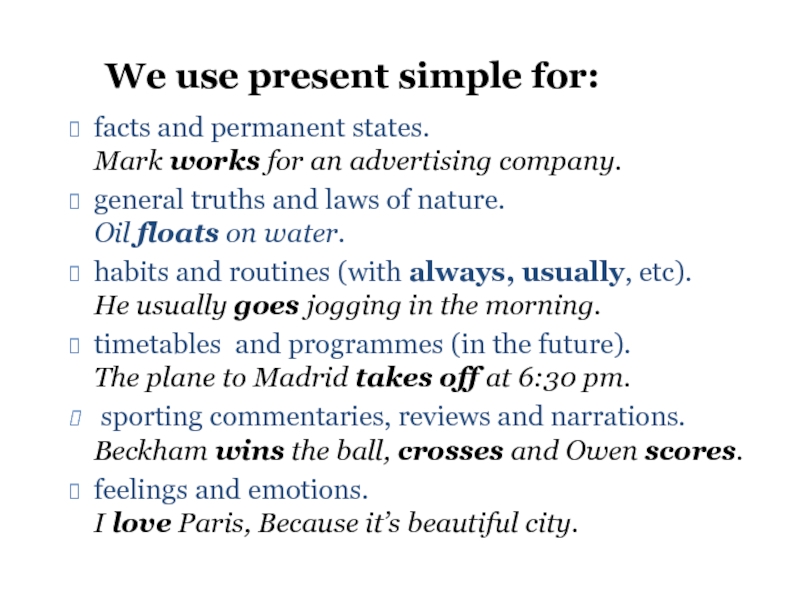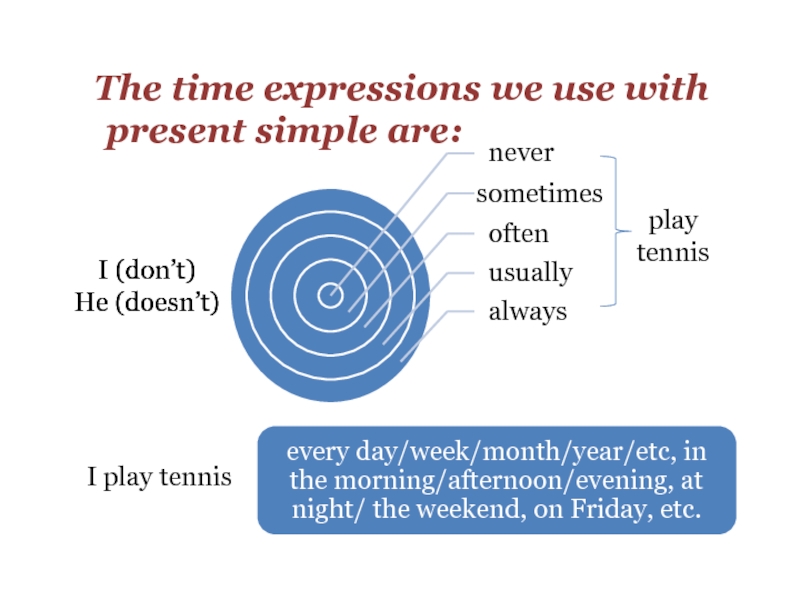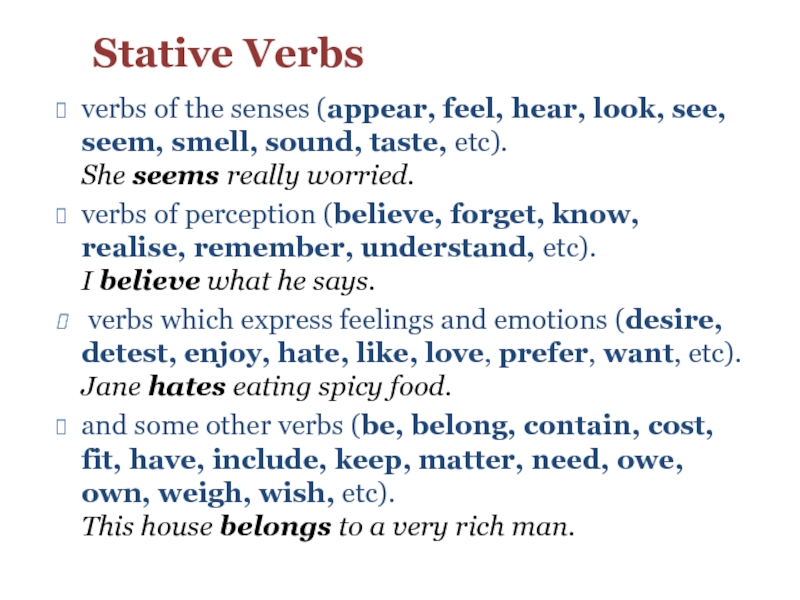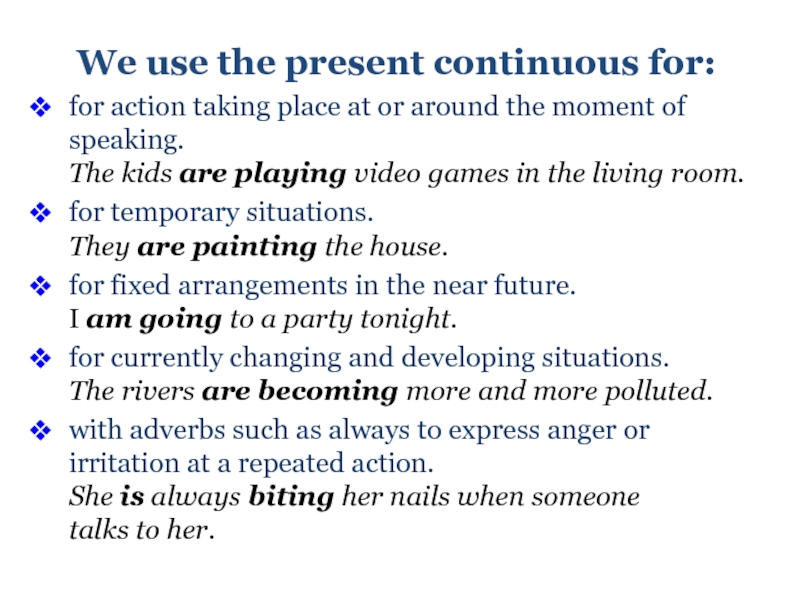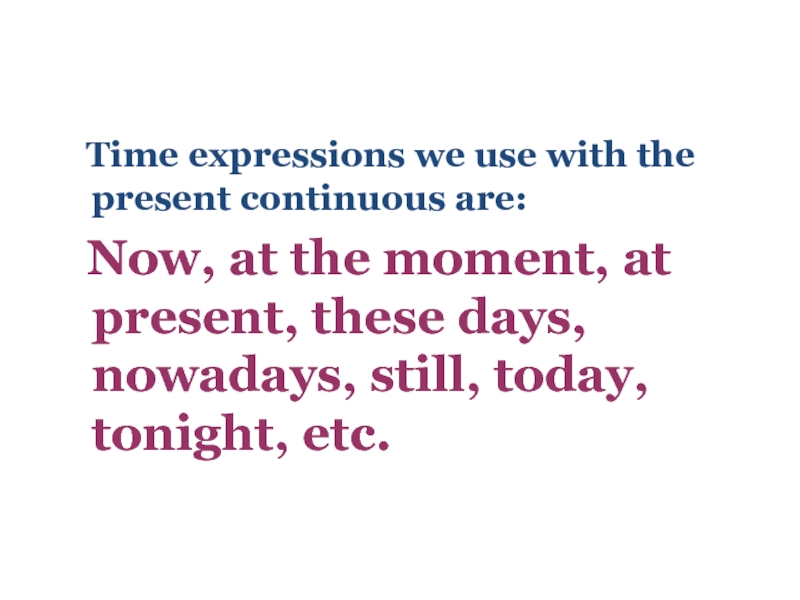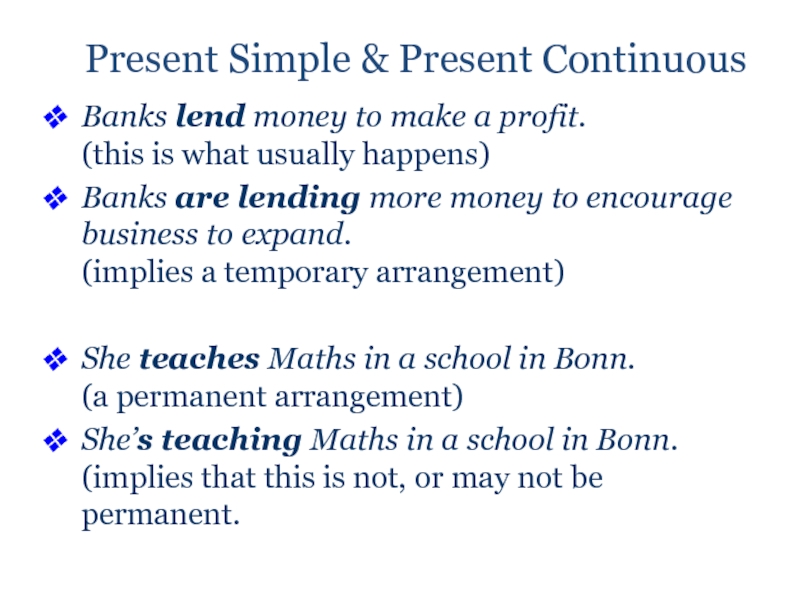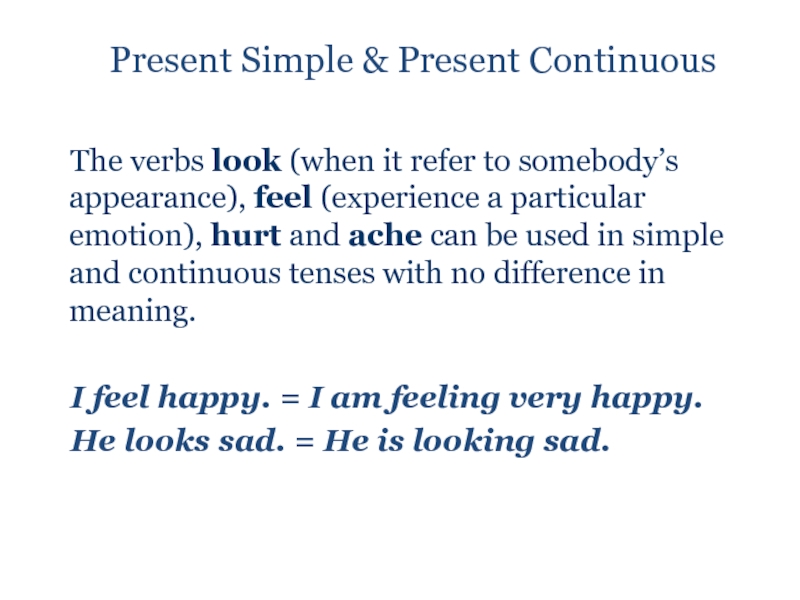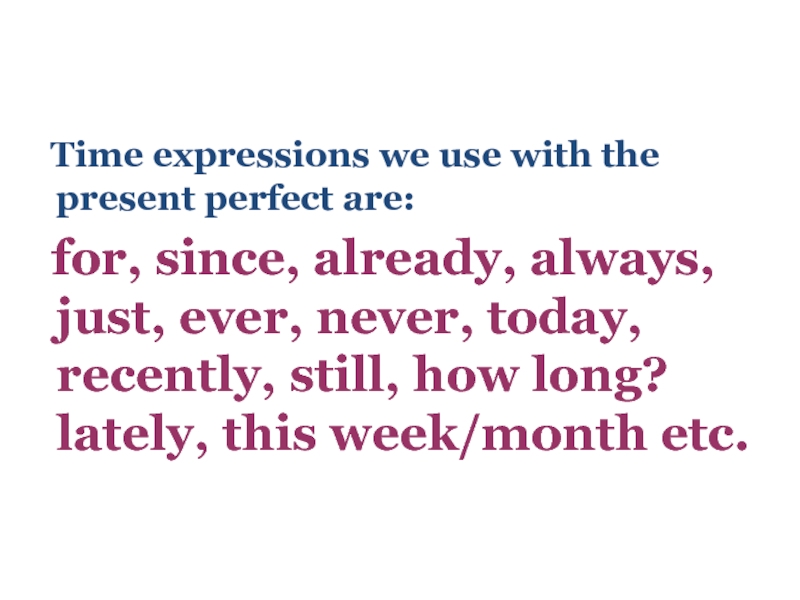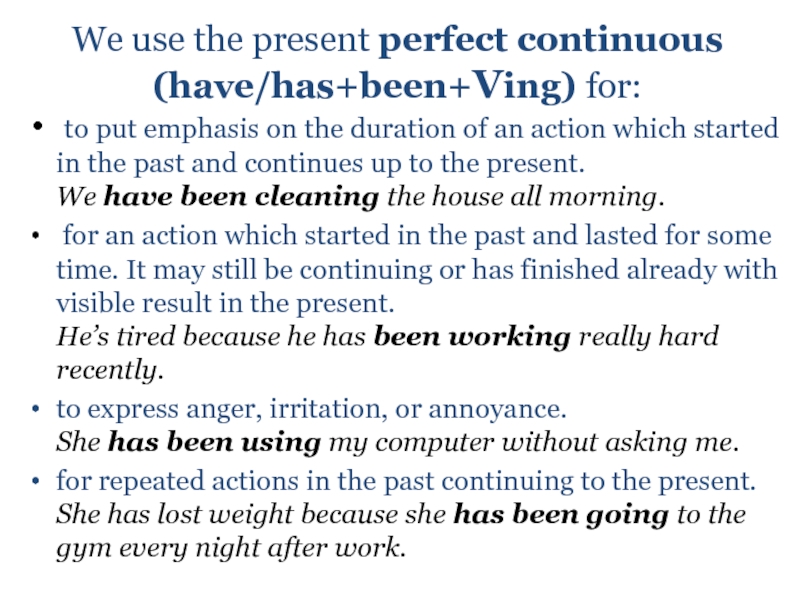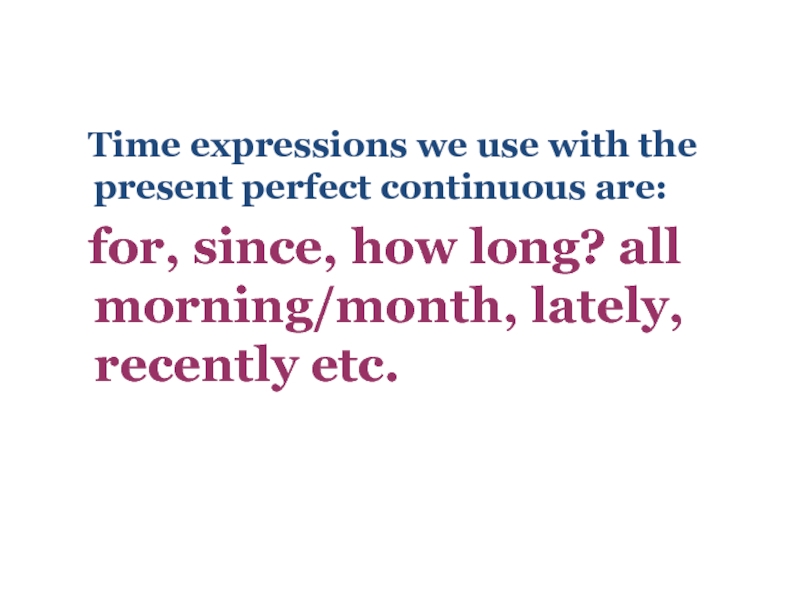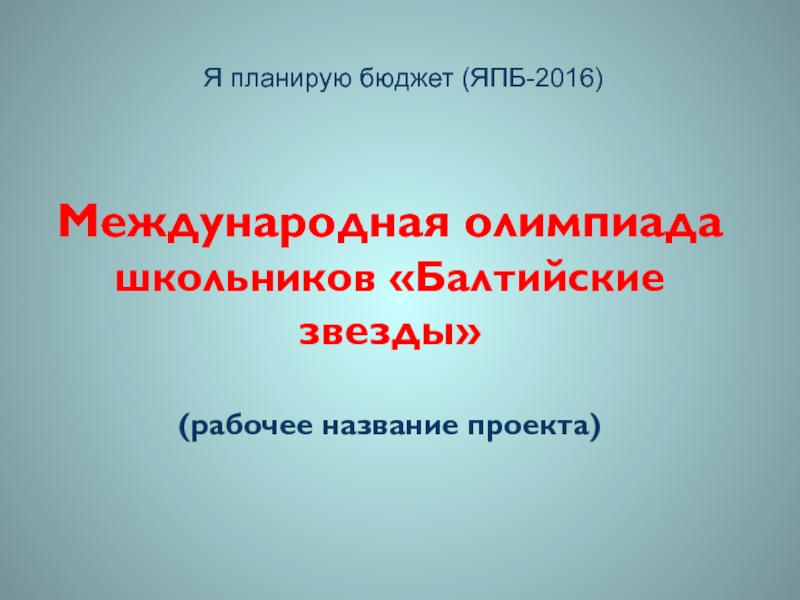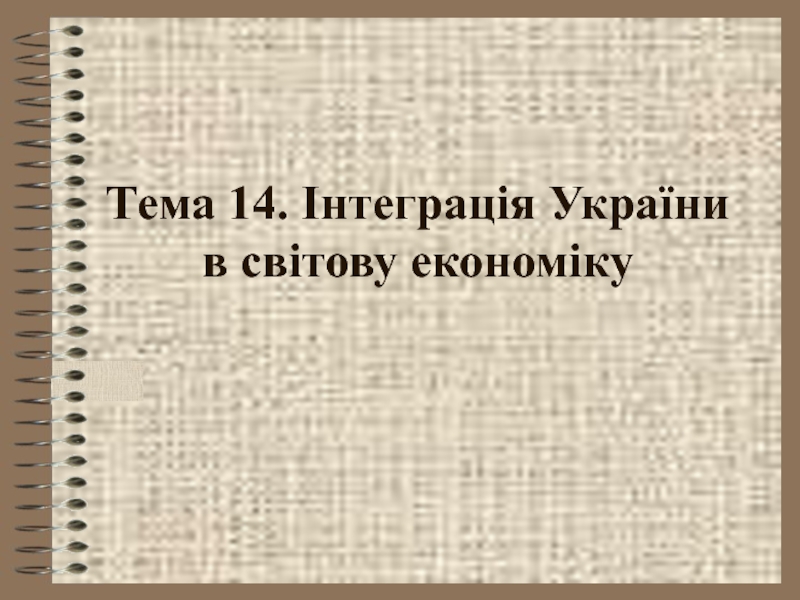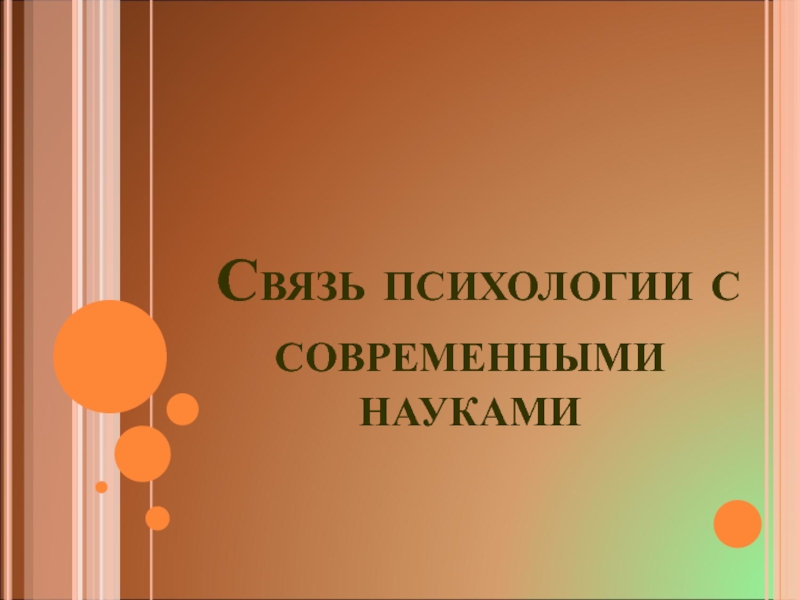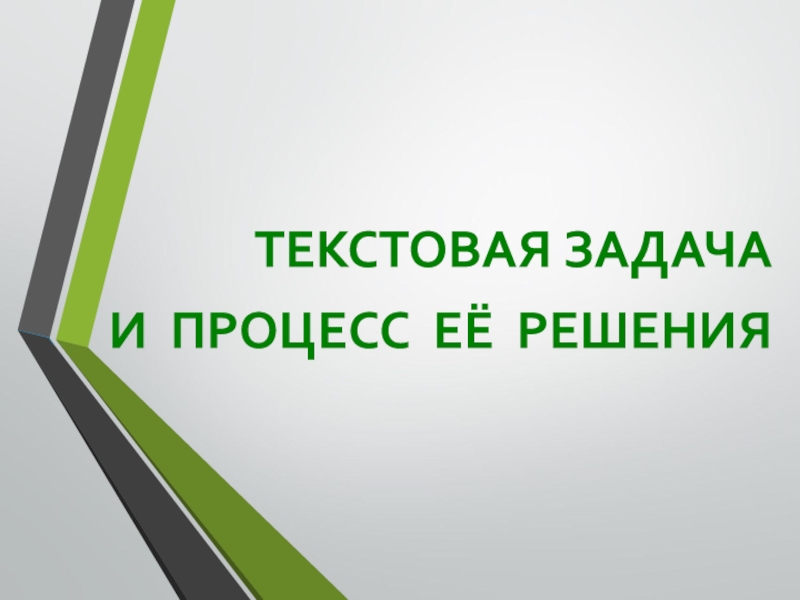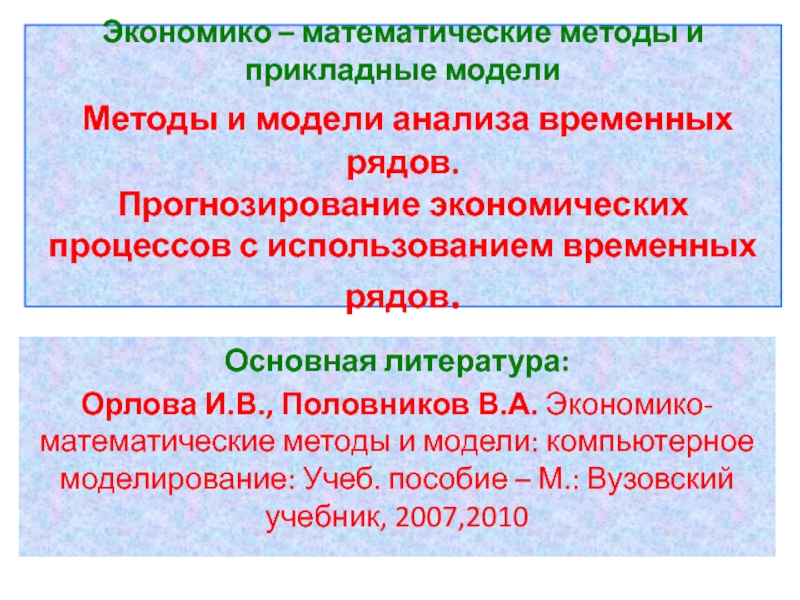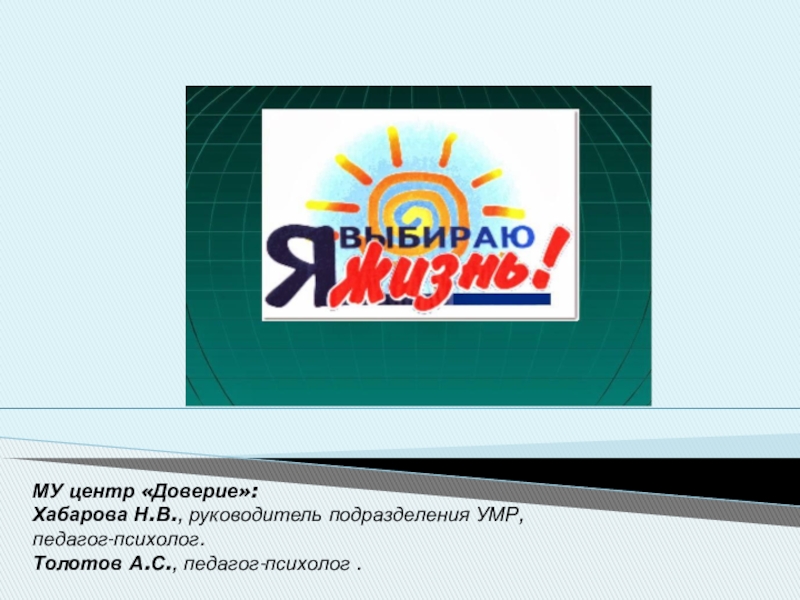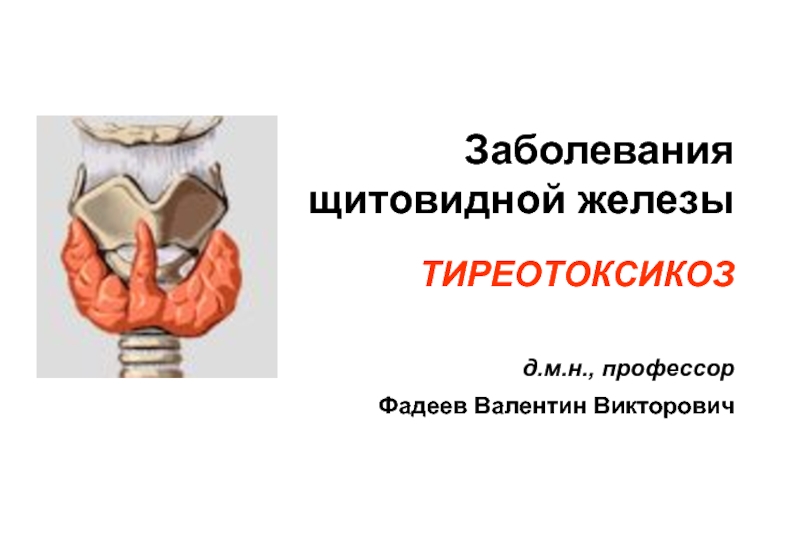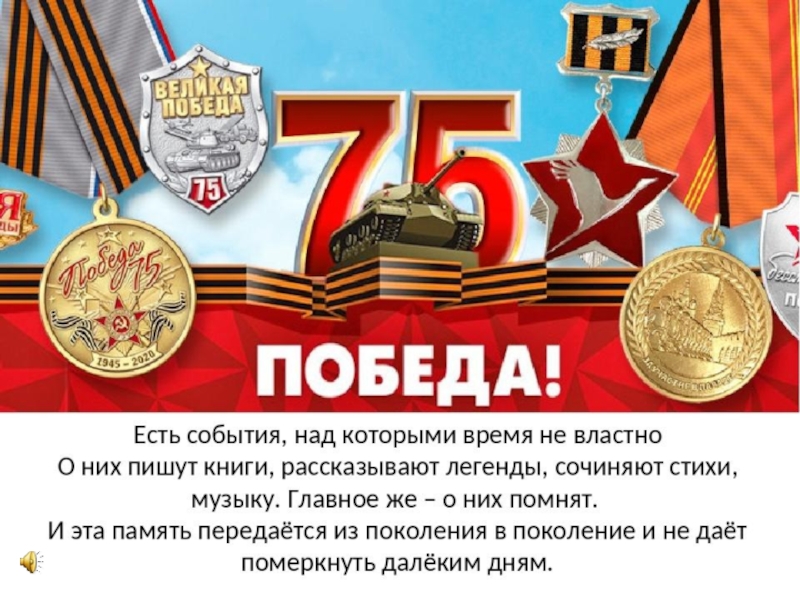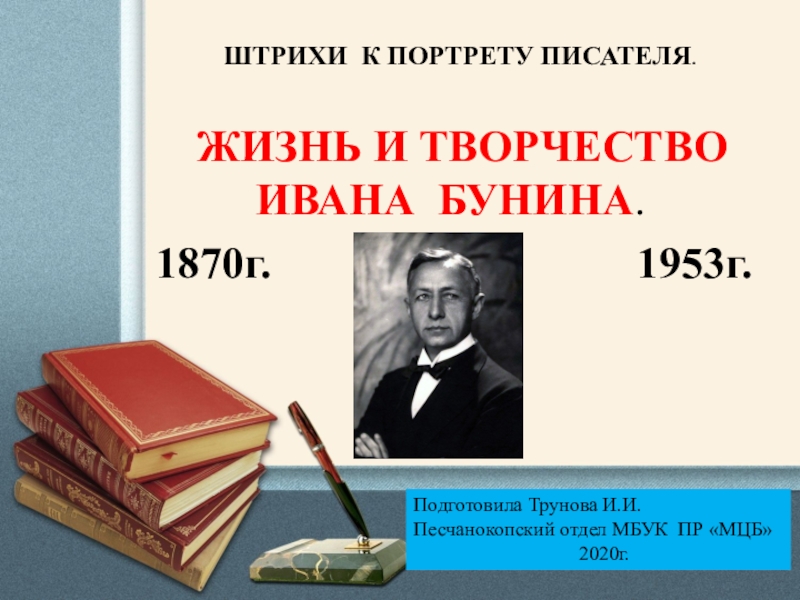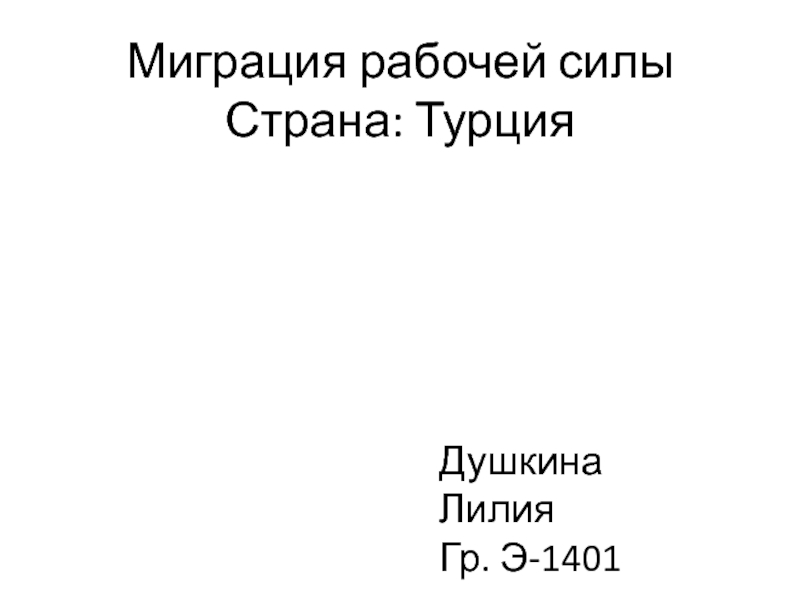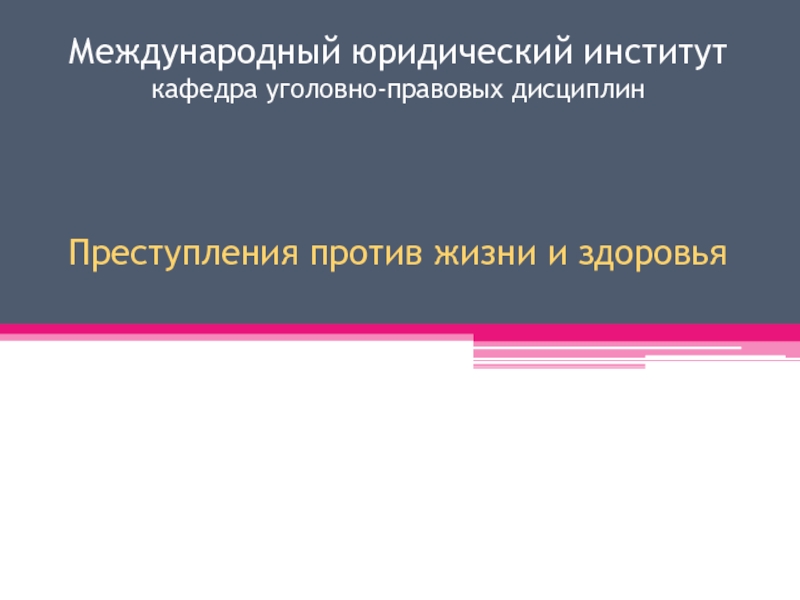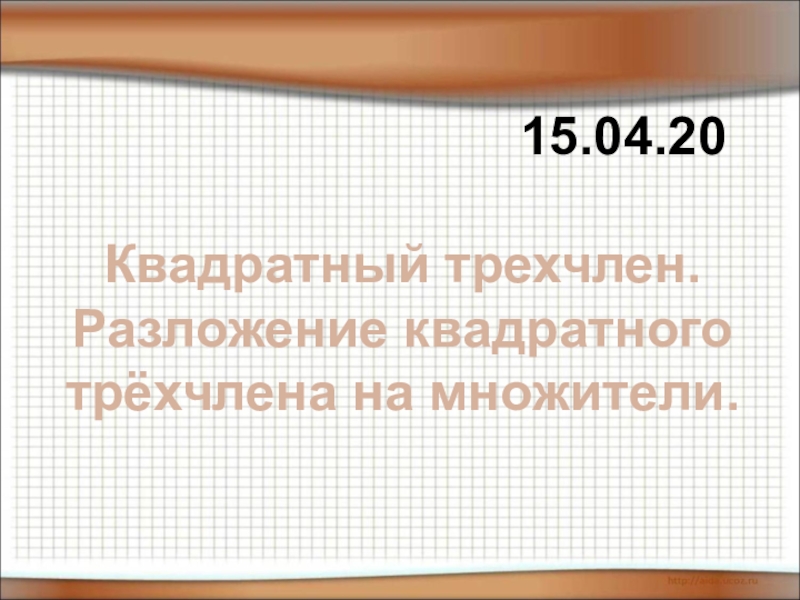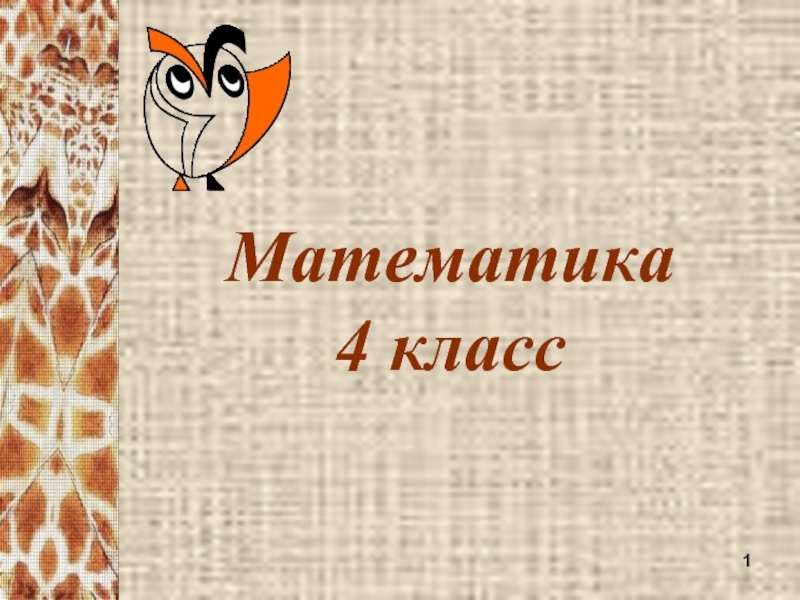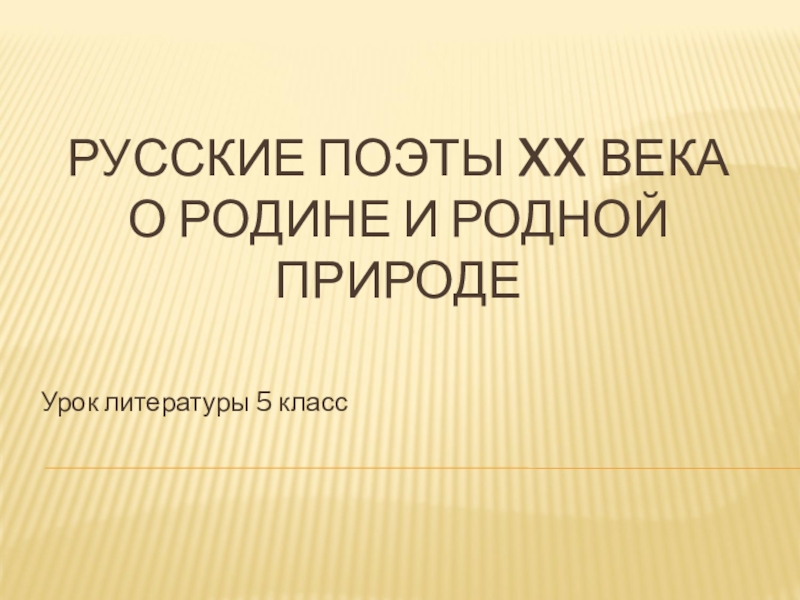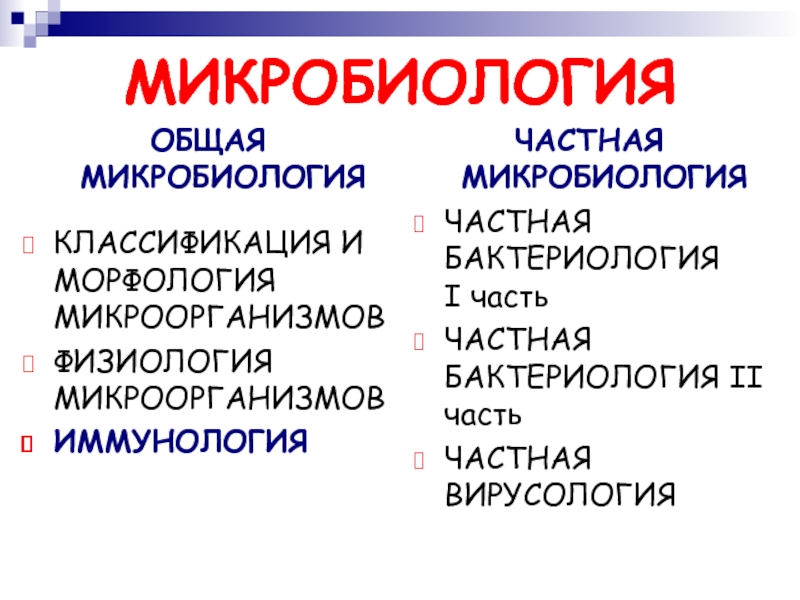Слайд 1Present Tenses
Intermediate
November 29,2010
Слайд 2We use present simple for:
facts and permanent states.
Mark works for an advertising company.
general truths and laws of nature. Oil floats on water.
habits and routines (with always, usually, etc). He usually goes jogging in the morning.
timetables and programmes (in the future). The plane to Madrid takes off at 6:30 pm.
sporting commentaries, reviews and narrations. Beckham wins the ball, crosses and Owen scores.
feelings and emotions. I love Paris, Because it’s beautiful city.
Слайд 3 The time expressions we use with present simple are:
I play tennis
I (don’t)
He (doesn’t)
play
tennis
I (don’t)
He (doesn’t)
Слайд 4 Stative Verbs
verbs of the senses (appear, feel, hear,
look, see, seem, smell, sound, taste, etc).
She seems really worried.
verbs of perception (believe, forget, know, realise, remember, understand, etc). I believe what he says.
verbs which express feelings and emotions (desire, detest, enjoy, hate, like, love, prefer, want, etc). Jane hates eating spicy food.
and some other verbs (be, belong, contain, cost, fit, have, include, keep, matter, need, owe, own, weigh, wish, etc). This house belongs to a very rich man.
Слайд 5We use the present continuous for:
for action taking place at
or around the moment of speaking.
The kids are playing video games in the living room.
for temporary situations. They are painting the house.
for fixed arrangements in the near future. I am going to a party tonight.
for currently changing and developing situations. The rivers are becoming more and more polluted.
with adverbs such as always to express anger or irritation at a repeated action. She is always biting her nails when someone talks to her.
Слайд 6 Time expressions we use with the present continuous
are:
Now, at the moment, at present, these days,
nowadays, still, today, tonight, etc.
Слайд 7 Present Simple & Present Continuous
Banks
lend money to make a profit.
(this is what usually happens)
Banks are lending more money to encourage business to expand. (implies a temporary arrangement)
She teaches Maths in a school in Bonn. (a permanent arrangement)
She’s teaching Maths in a school in Bonn. (implies that this is not, or may not be permanent.
Слайд 8 The verbs look (when it refer to somebody’s
appearance), feel (experience a particular emotion), hurt and ache can
be used in simple and continuous tenses with no difference in meaning.
I feel happy. = I am feeling very happy.
He looks sad. = He is looking sad.
Present Simple & Present Continuous
Слайд 9We use the present perfect
(have/has +past participle) for:
an action that happened at an unstated time in the past. The emphasis is on the action, the time that it occurred is unimportant or unknown. I have washed the car.
an action which started in the past and continues up to the present, especially with stative verbs. I have known her for six years.
a recently completed action. I have finished my geography essay.
personal experiences or changes. She has dyed her hair.
Слайд 10 Time expressions we use with the present perfect
are:
for, since, already, always, just, ever, never, today,
recently, still, how long? lately, this week/month etc.
Слайд 11We use the present perfect continuous
(have/has+been+Ving) for:
to
put emphasis on the duration of an action which started in the past and continues up to the present. We have been cleaning the house all morning.
for an action which started in the past and lasted for some time. It may still be continuing or has finished already with visible result in the present. He’s tired because he has been working really hard recently.
to express anger, irritation, or annoyance. She has been using my computer without asking me.
for repeated actions in the past continuing to the present. She has lost weight because she has been going to the gym every night after work.
Слайд 12 Time expressions we use with the present perfect
continuous are:
for, since, how long? all morning/month, lately,
recently etc.
